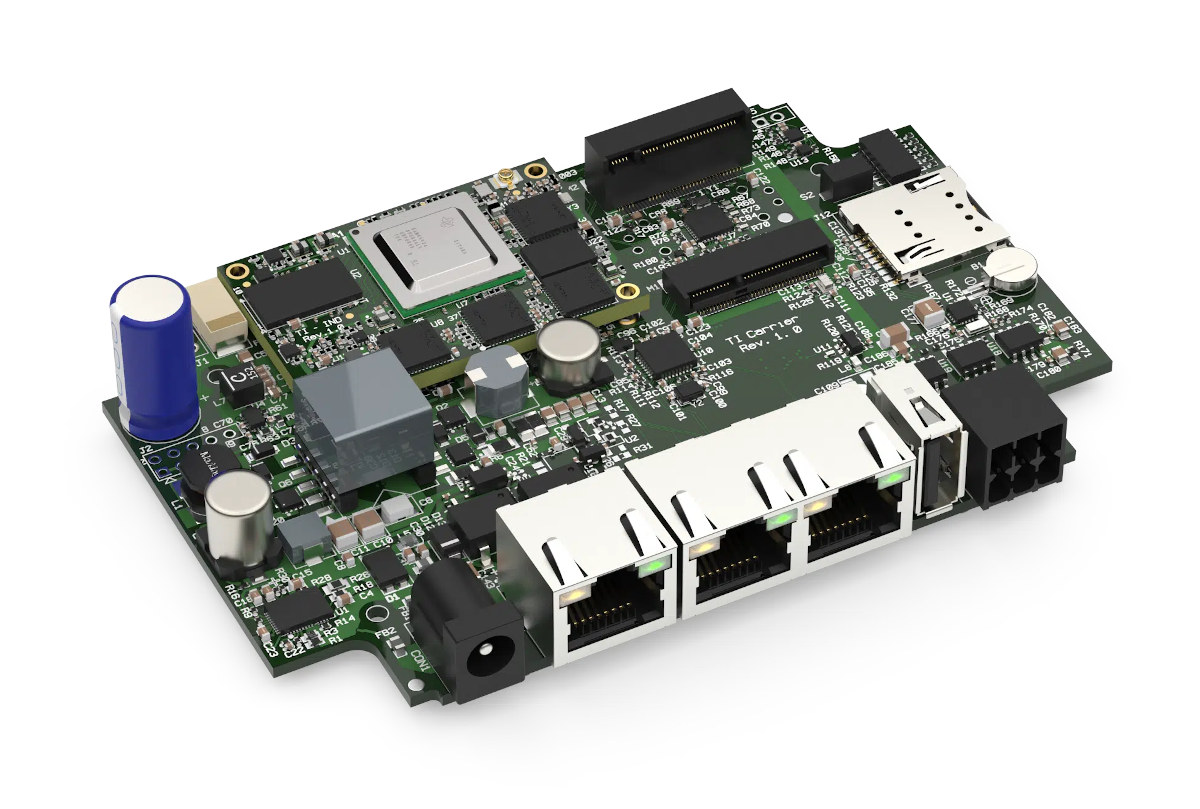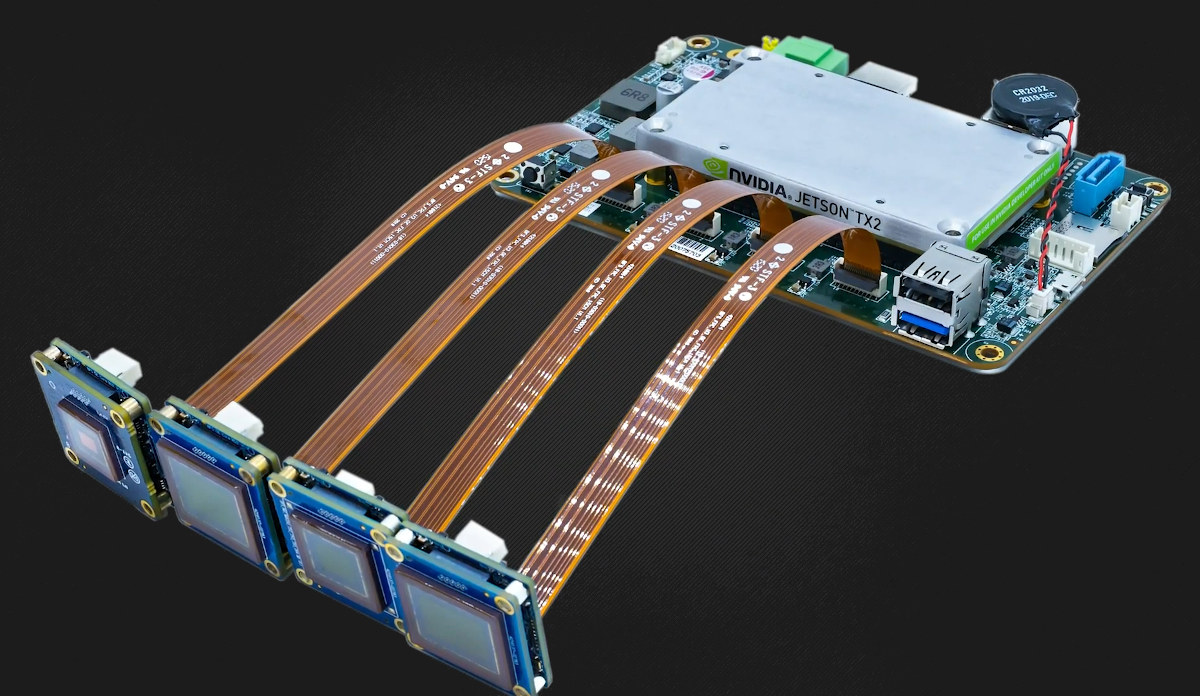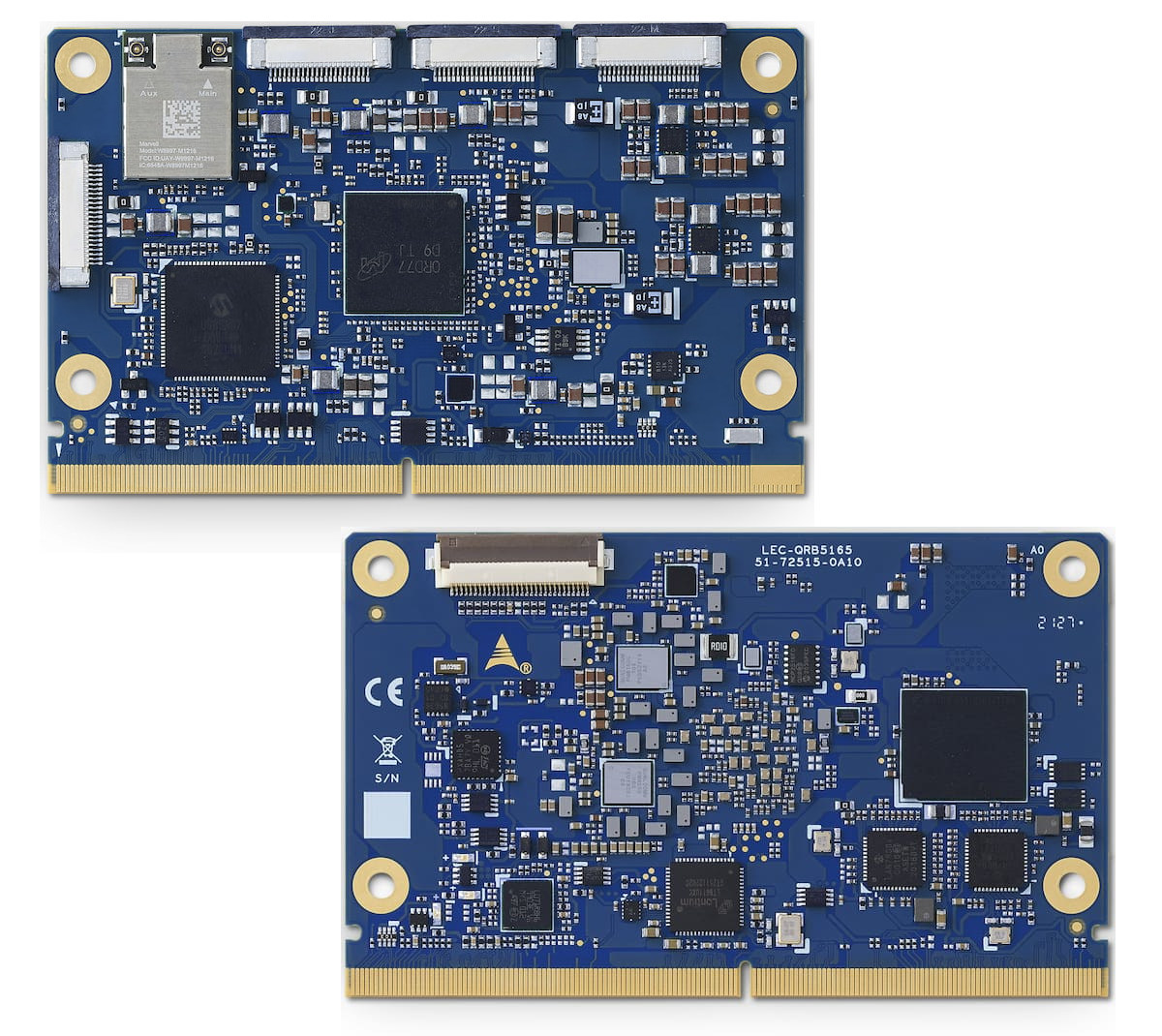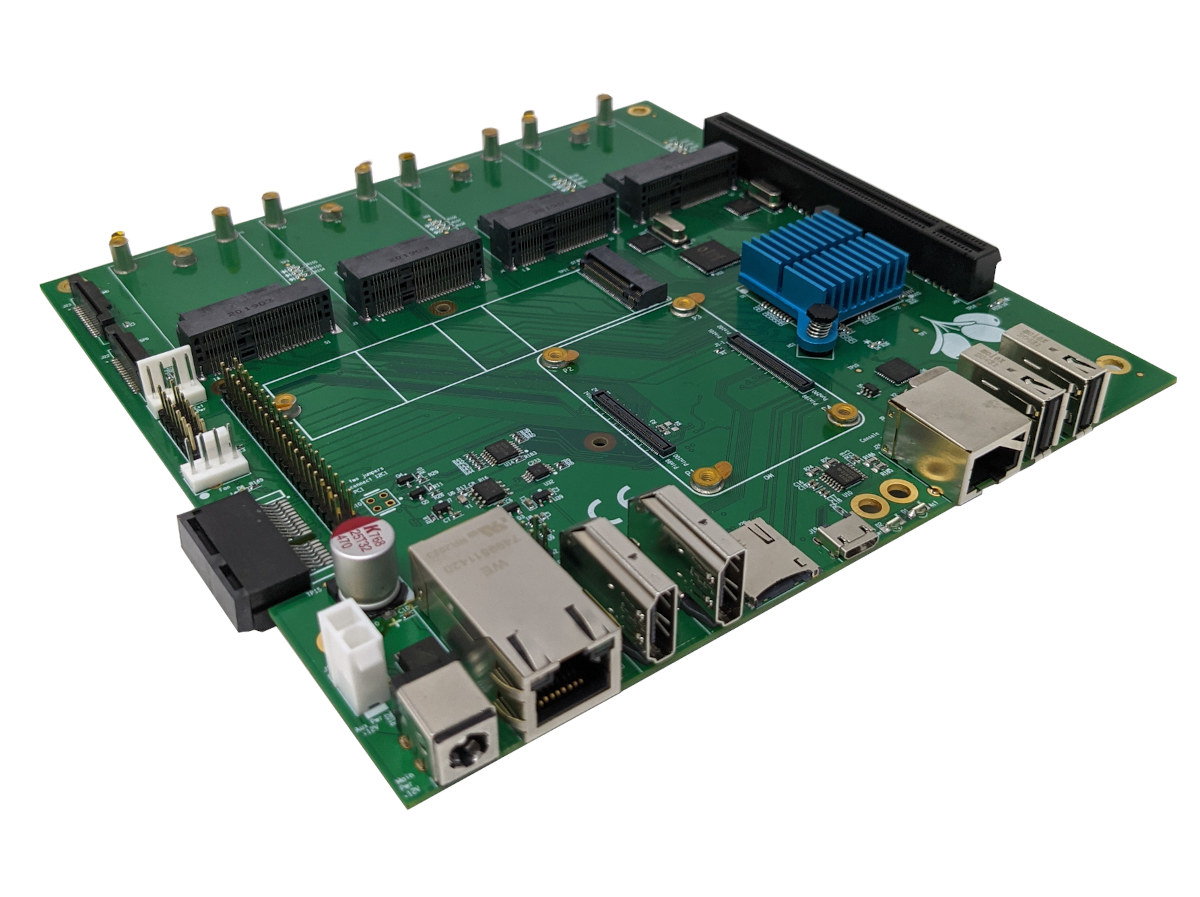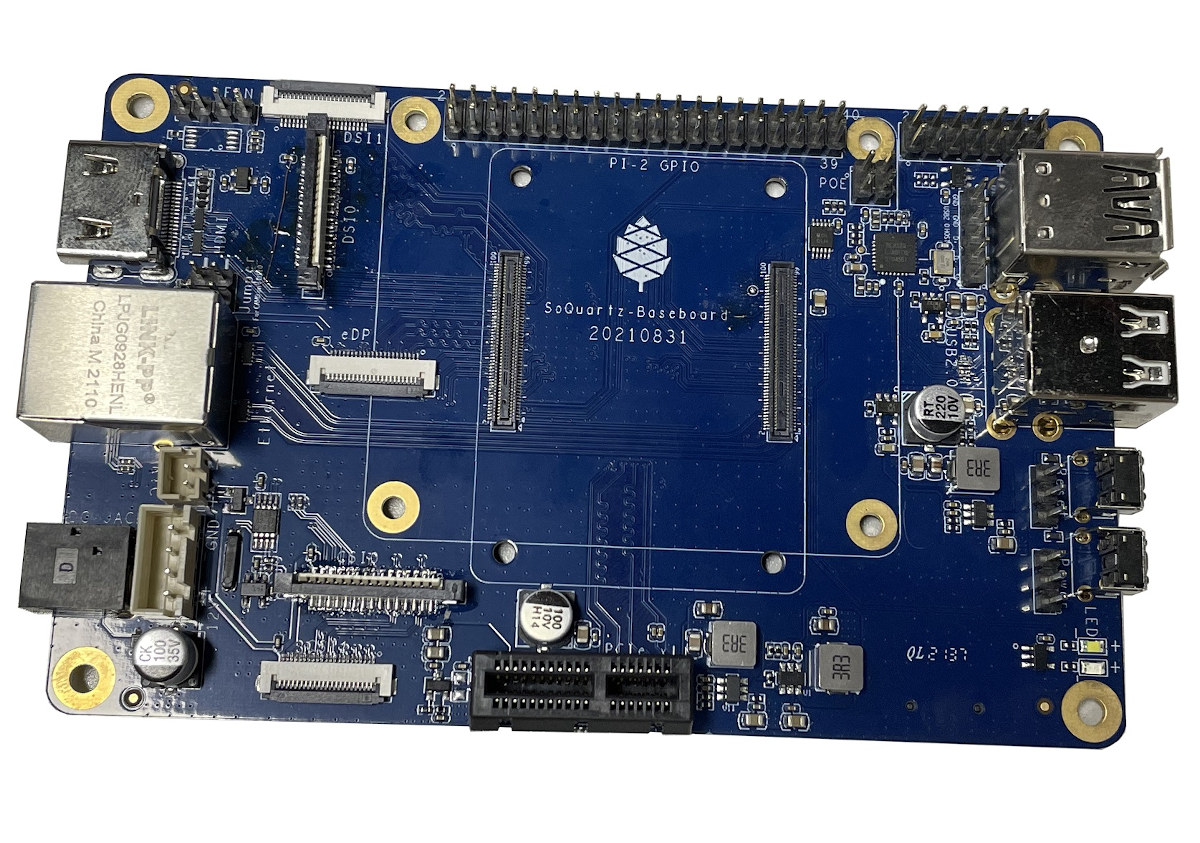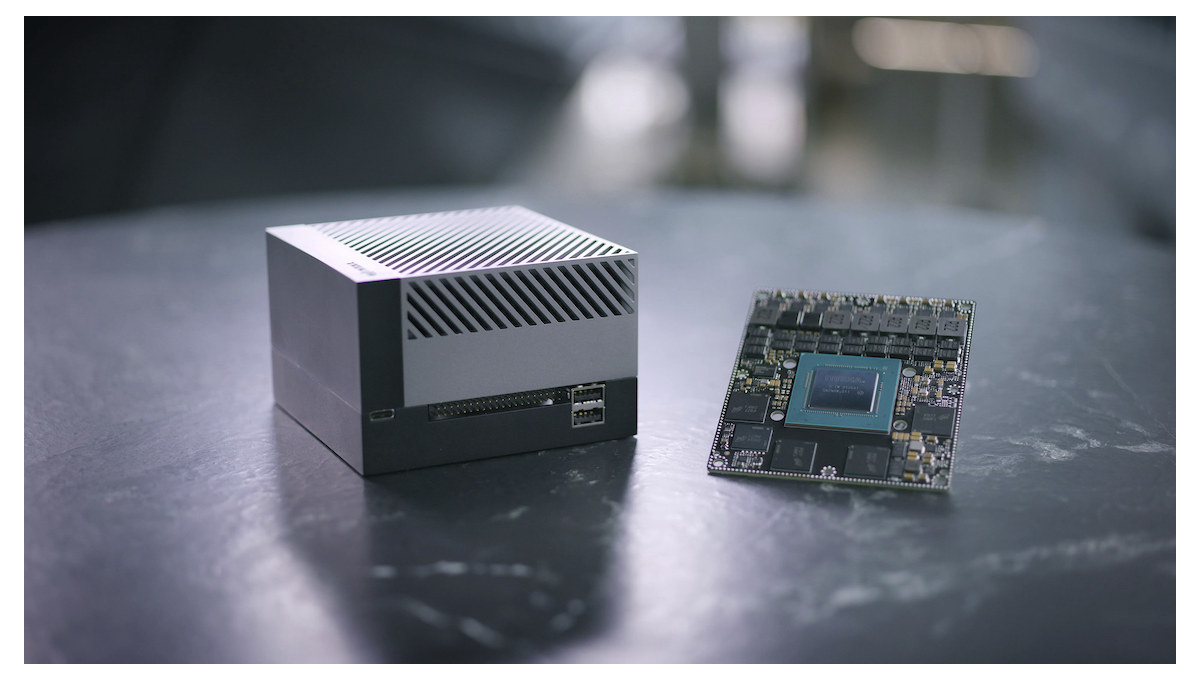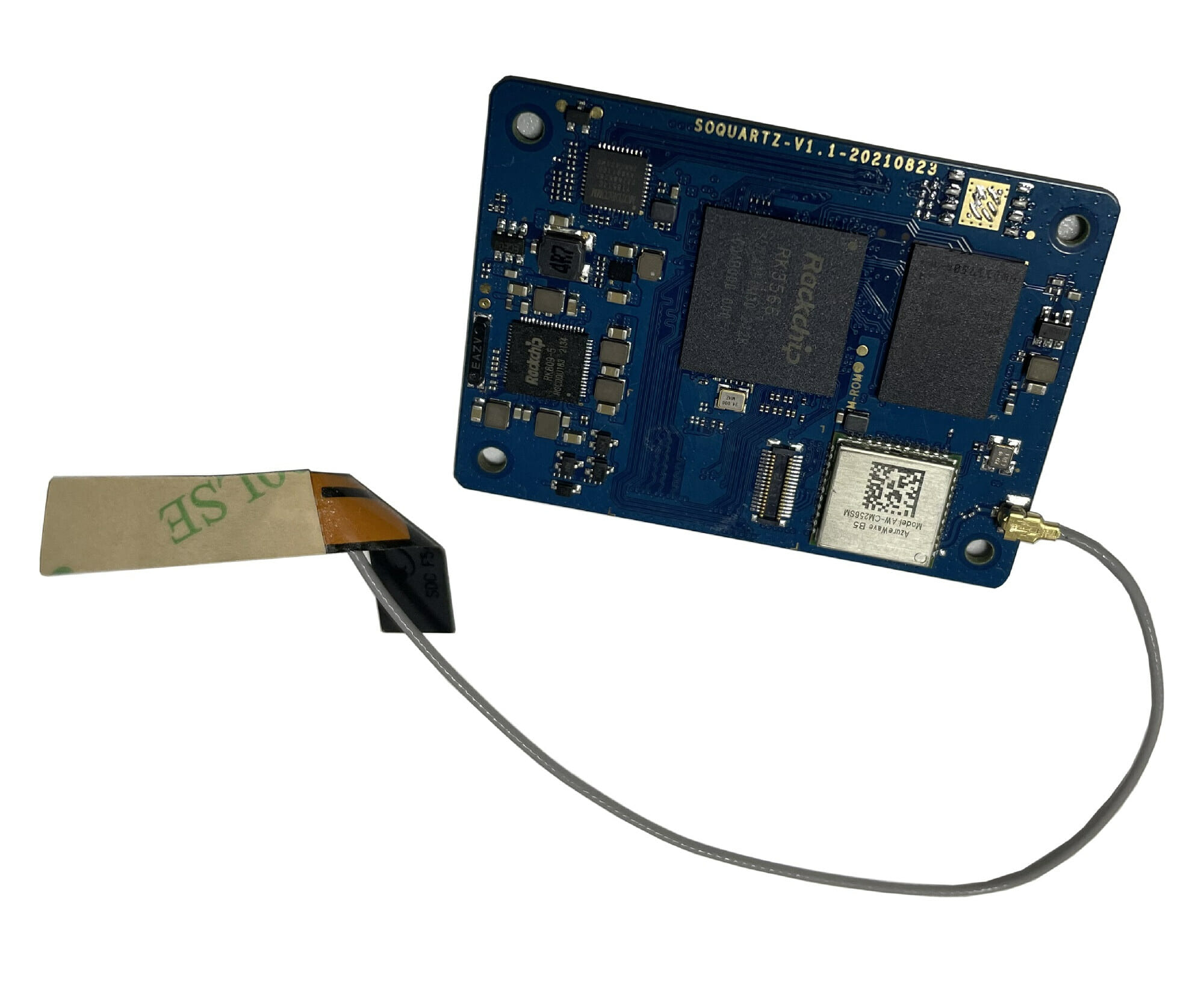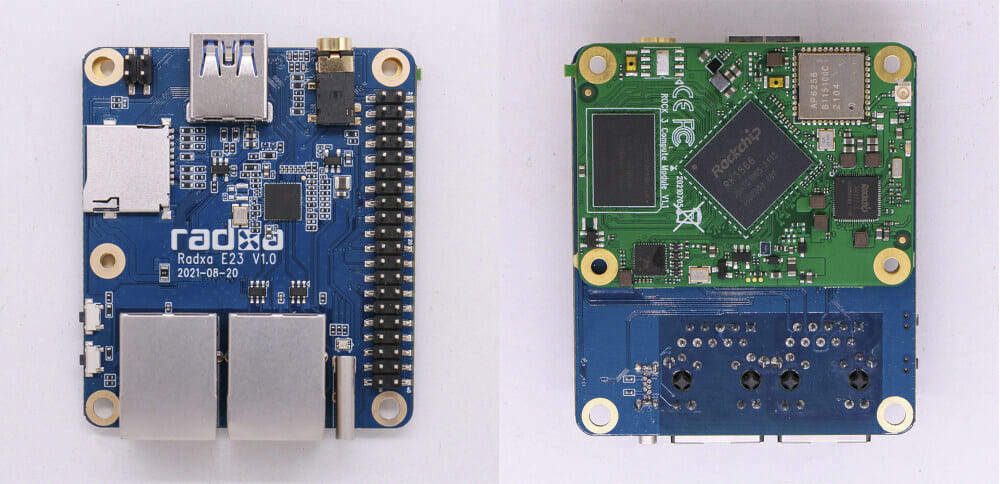When we first wrote about Texas Instruments AM64x 7-core processor for PLCs, motor drives, industrial robots, we noted SolidRun, TQ Embedded, and PHYTEC were working on system-on-modules based on the processor with availability scheduled for Q4 2021 or Q1 2022. SolidRun has now formally announced two TI Sitara AM6442 systems-on-module – Sitara AM6442R SOM and Sitara AM6442A SOM – as well as HummingBoard-T AM64x Base and Pro carrier boards for evaluation and development. SolidRun Sitara AM6442 SOM Both variants of the module share most of the same specifications: SoC – Texas Instruments Sitara AM6442 7-core processor with 2x Cortex A53 application cores @ 1.0 GHz, 4x Cortex R5 real-time cores @ 800 MHz, 1x Cortex M4 isolated core @ 400 MHz System Memory – 1GB DDR4 with inline ECC Storage 8GB eMMC AM6442A only – Optional QSPI flash Networking AM6442R 1x 10/100/1000 Mbps (PRU ICSSG, Supporting: TSN, EtherCAT, PROFINET, EtherNET/IP) […]
Teledyne FLIR Quartet Jetson TX2 carrier board supports up to four USB 3.0 cameras
There are already plenty of NVIDIA Jetson-based camera solutions from carrier boards to IP67 rugged cameras, but Teledyne FLIR has decided to launch its own with the Quartet carrier board for the Jetson TX2 module. The Quarter board is not designed to work with the thermal cameras the company is known for, but instead FLIR Blackfly S USB3 cameras designed for machine vision. Besides four TF38 USB 3.0 connectors, the carrier board also offers a SATA storage interface, HDMI video output, and extra USB Type-A ports for other peripherals. Teledyne FLIR Quartet (P/N ACC-01-6003) specifications: Supported SoMs – NVIDIA Jetson TX2, Jetson TX2i module Storage – SATA III connector, MicroSD card slot Video Output – 1x HDMI Type-A port up to 4Kp60 Camera Inputs – 4x USB 3.0 TF38 ports Other USB ports – 1x USB 3.0 Type-A port, 1x USB 2.0 Type-A port, 1x micro USB OTG port Misc […]
ADLINK LEC-RB5 – A Qualcomm QRB5165 SMARC module designed for drones and robots
ADLINK Technology LEC-RB5 is a SMARC compliant system-on-module powered by the Qualcomm QRB5165 octa-core Cortex-A77 class processor which we’ve already seen in Qualcomm Flight RB5 high-end drone reference design and Lantronix Open-Q 5165RB system-on-module designed for robotics applications. The LEC-RB5 SMARC module ships with up to 8GB PoP LPDDR4 memory, 256GB UFS storage, provides on-device artificial intelligence capabilities (up to 15 TOPS), support for up to 6 cameras, and low power consumption. The main target applications are high-end robots and drones in the consumer, enterprise, defense, industrial, and logistics sectors. LEC-RB5 SMARC SoM specifications: SoC – Qualcomm QRB5165 octa-core Kryo 585 processor with a Kryo Gold Prime @ 2.84 GHz, 3x 3 Kryo Gold @ 2.42 GHz, 4x Kryo Silver @ 1.81 GHz, Adreno 650 GPU @ up to 587 MHz, Video decode HW acceleration for H.265/HEVC, H.264, MPEG2, MVC, VC-1, WMV9, JPEG/MJPEG, VP8, VP9, video encode HW acceleration for […]
Seaberry Mini-ITX carrier board for Raspberry Pi CM4 exposes 11 PCIe slots and sockets
The Raspberry Pi CM4 may only have a one PCIe x1 Gen 2 interface, but this has not stopped ALFTEL from designing Seaberry, a mini-ITX carrier board for the Raspberry Pi Compute Module 4 with eleven slots and sockets making use of the single 5 Gbps PCIe Gen 2 interface. The board also offers two SATA ports, one Gigabit Ethernet port, one RJ45 console port, two HDMI ports, a micro SD card slot, two USB 2.0 ports, as well as the usual 40-pin GPIO expansion header, besides the PCIe x16 slot, a PCIe x1 side slot, and M.2 and mPCIe sockets. Seaberry carrier board specifications: Compatible systems-on-module Raspberry Pi CM4 module (Regular or Lite) Radxa CM3 Pine64 SoQuartz Storage – 1x MicroSD card for Raspberry Pi CM4 Lite, 1x M.2 socket for NVMe SSD (See PCIe expansion section) Video Output – 2x HDMI output ports, 1x MIPI DSI connector Camera […]
Pine64 hostboards for SOQuartz System-on-Module
While the Rockchip RK3566 powered SOQuartz system-on-module is designed to be compatible with most Raspberry Pi CM4 baseboards, Pine64 is working on three baseboards, which it calls hostboards, for SOQuartz, with the latest introduced in the Pine64’s November update designed to fit in a server rack. That means we now have the “small form factor” hostboard that’s about the size of a business card, the Model-A hostboard with more features and the same dimensions as Pine A64 SBC, and the new Blade hostboard compatible with server racks. Let’s have a look at the three baseboards. Small form factor hostboard Key features: Compatible with SOQuartz SoM with quad-core Cortex-A55 processor with 2GB to 8GB RAM, optional eMMC flash up to 128GB, and optional WiFi 5 and Bluetooth 5.0 module Display Interfaces HDMI 2.0 up to 4Kp60 1x MIPI DSI connector Camera interfaces – 2x MIPI CSI connectors Networking – Gigabit Ethernet […]
NVIDIA Jetson AGX Orin 12-core Cortex-A78E module delivers up to 200 TOPS
The upcoming NVIDIA Jetson AGX Orin module packs some serious processing power with a 12-core Cortex-A78AE processor, 2048 CUDA cores, and 64 Tensor cores delivering up to 200 TOPS of AI performance, or 6 times more than its predecessor, the Jetson AGX Xavier module. Designed for robotics, autonomous machines, medical devices, the Jetson AGX Orin delivers the same performance as a GPU-enabled server, but in a much more compact 100 x 87mm form factor. The module can be operated in three power modes, namely 15W, 30W, or 50W depending on performance and power requirements, and a compact developer kit will also be made available. Jetson AGX Orin specifications: CPU – 12-core Arm Cortex-A78AE v8.2 64-bit processor with 3MB L2 + 6MB L3 cache GPU / AI accelerators NVIDIA Ampere architecture with 2048 NVIDIA CUDA cores and 64 Tensor Cores @ 1 GHz DL Accelerator – 2x NVDLA v2.0 Vision Accelerator […]
SOQuartz – Raspberry Pi CM4 compatible Rockchip RK3566 SoM launched for $35 and up
Radxa CM3 Raspberry Pi 4 alternative was just introduced yesterday, but today, Pine64 SOQuartz Compute Module has just become available for $34.99 and up. Pine64 announced the Raspberry Pi Compute Module 4 compatible Rockchip RK3566 system-on-module (SoM) last June, and today the company/community launched three SOQuartz models with a wireless module and equipped with either 2GB, 4GB, or 8GB RAM. SOQuartz system-on-module preliminary specifications: SoC – Rockchip RK3566 quad-core Cortex-A55 processor up to 1.8 GHz with 32-bit RISC-V MCU, Arm Mali-G52 GPU supporting OpenGL ES 1.1/2.0/3.2, OpenCL 2.0, Vulkan 1.1, 0.8 TOPS NPU for AI acceleration System Memory – 2GB to 8GB LPDDR4 Storage Optional 128 Mbit SPI flash Optional eMMC module from 16GB up to 128GB capacity or soldered-on eMMC module (see bottom of board) Wireless module – Azurewave AW-CM256SM WiFi 5 802.11ac & Bluetooth 5.0 wireless module plus an u.FL antenna connector. 2x 100-pin high-density board-to-board connectors with: […]
Radxa CM3 – A drop-in Raspberry Pi CM4 alternative
Radxa CM3 is a system-on-module that offers an alternative to the Raspberry Pi CM4, with the same form factor allowing it to become a drop-in replacement, but switching from a Broadcom BCM2711 processor to a Rockchip RK3566 quad-core Cortex-A55 SoC. Radxa CM3 will work with existing carrier boards for the Raspberry Pi Compute Module 4, albeit some features such as dual HDMI are not available, instead, providing a single HDMI, but the module also offers extra features through an additional 100-pin board-to-board with interfaces such as SATA III and USB 3.0. Let’s compare Radxa CM3 specifications to the ones of Raspberry Pi CM4. Comparing Broadcom BCM2711 quad-core processor and Rockchip RK3566, as the Cortex-A72 may still be faster on some workloads despite the lower frequency, and some other workloads may be dramatically faster on RK3566, for example for those using Armv8 Crypto extensions missing on all Raspberry Pi, which we […]


